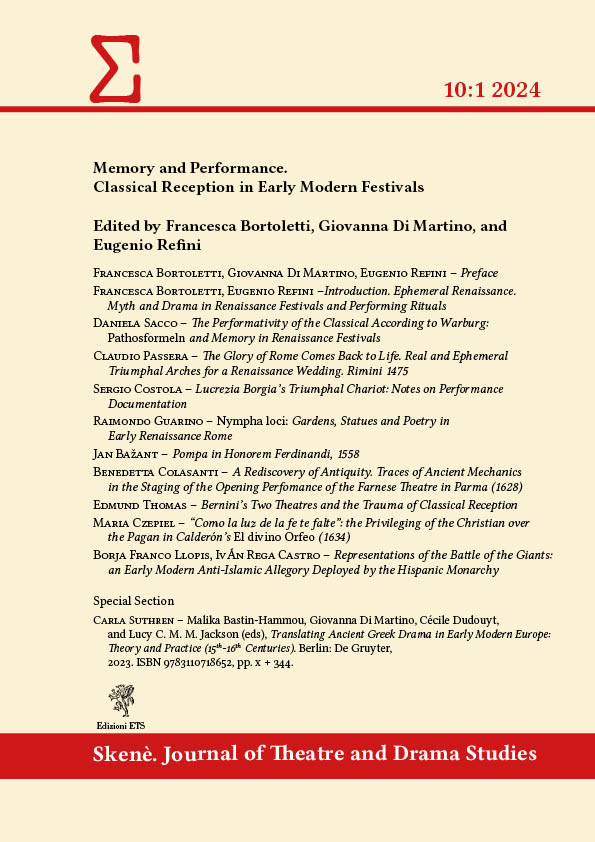“Como la luz de la fe te falte”: the Privileging of the Christian over the Pagan in Calderón’s El divino Orfeo (1634)
DOI:
https://doi.org/10.13136/rcxx9x17Abstract
The seventeenth century saw the rise in Spain of autos sacramentales, allegorical plays performed on the feast of Corpus Christi. The most important writer of this genre was Calderón de la Barca, and among his autos is a group of ten plays whose dramatic action is based on Classical mythology. In these plays, Calderón draws on an age-old tradition of allegorisation in order to assimilate pagan fable to the Christian story of Redemption. I begin this study by discussing how contemporary mythographers dealt with the delicate balance of synthesising the pagan and Christian narratives while affirming the truth of the latter, as well as Calderón’s own defence of the allegorical use of fable. I go on to exemplify how Calderón synthesises pagan and Christian elements while emphasising the validity of the Christian narrative in a specific play, El divino Orfeo (1634). Calderón principally exploits the myth of Orpheus, although he also draws on the Ovidian Creation myth, the myth of Proserpina, and the descent of Aeneas to the Underworld. I also discuss the use of a further myth which has not been noticed by scholars, namely that of Phaethon, which Calderón exploits in his depiction of the Devil. However, I demonstrate that Calderón privileges the Christian narrative by constantly naming biblical and patristic authorities, while never referring to Classical ones such as Ovid and Virgil. Furthermore, I will show how Calderón suppresses or elides certain elements of the Classical fable to make it more compatible with the Christian account of Redemption.
Keywords: Calderón; El divino Orfeo; auto sacramental; mythology; syncretism
Downloads
Published
Issue
Section
License
Copyright (c) 2024 Skenè. Journal of Theatre and Drama Studies

This work is licensed under a Creative Commons Attribution 4.0 International License.
Open Access Policy
This journal provides immediate open access to its content on the principle that making research freely available to the public supports a greater global exchange of knowledge.
This Journal is a CC-BY 4.0 publication (https://creativecommons.org/licenses/by/4.0/). This Licence allows others to share the work with an acknowledgement of the work’s authorship and initial publication in this Journal, providing a link to the Licence and explicitly underlining any change (full mention of Issue number, year, pages and DOI is required).
- The Author retains (i) the rights to reproduce, to distribute, to publicly perform, and to publicly display the Article in any medium for any purpose; (ii) the right to prepare derivative works from the Article; and (iii) the right to authorise others to make any use of the Article so long as the Author receives credit as Author and the Journal in which the Article has been published are cited as the source of first publication of the Article. For example, the Author may make and distribute copies in the course of teaching and research and may post the Article on personal or institutional Web sites and in other open-access digital repositories.
- The Author is free to enter into separate, additional contractual arrangements for the non-exclusive distribution of the Journal’s published version of the work, with an acknowledgement of its initial publication in this Journal and explicitly underlining any change (full mention of Issue number, year, pages and DOI is required).
- The Author is permitted and encouraged to post their work online after the evaluation process has been successfully passed, as it can lead to productive exchanges as well as to a wider dissemination of the published work.

